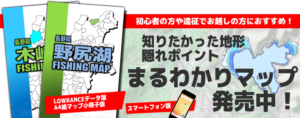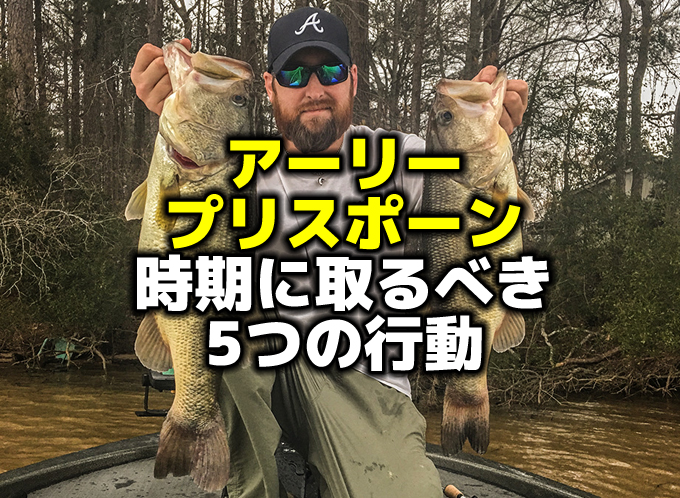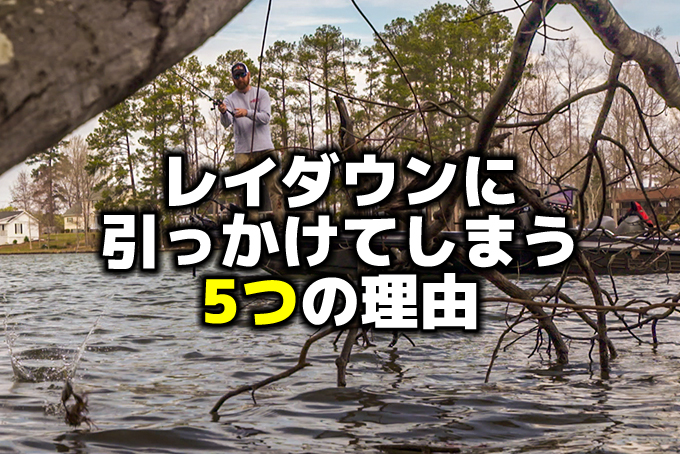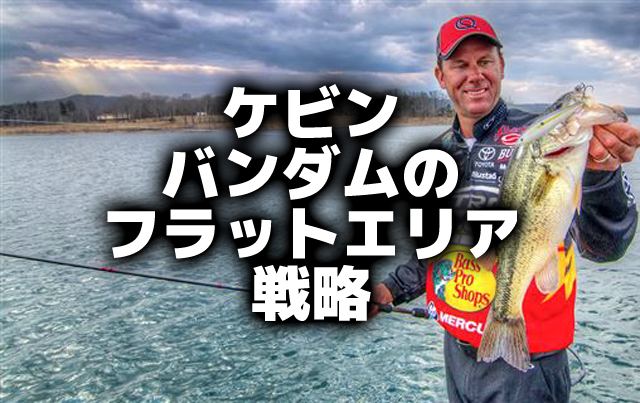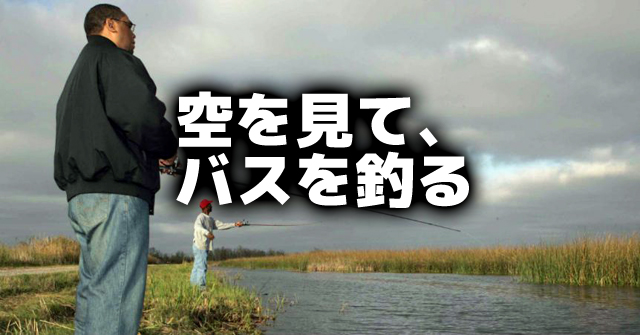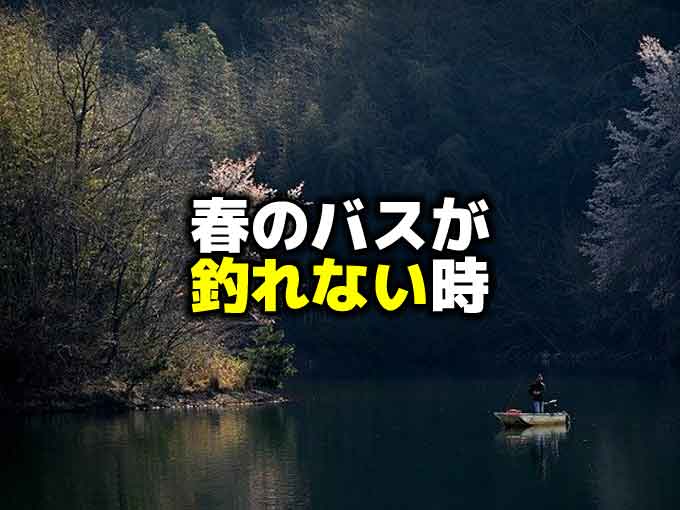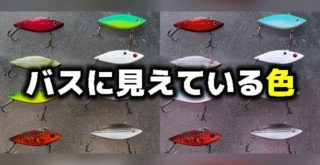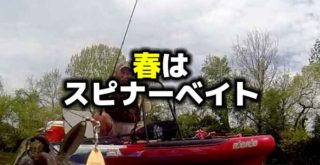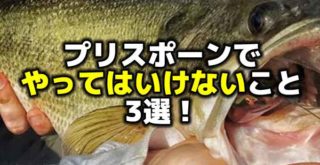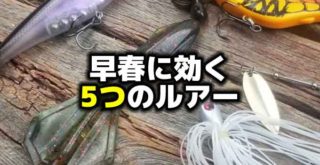プリスポーンフィッシュの逆アプローチ

こんにちは!店長の小山です!
本日は海外サイトより、”A Backwards Approach to Prespawn Bass”という記事を引用してご紹介いたします。
引用先:scout.com”A Backwards Approach to Prespawn Bass”by Walker Smith – Mar 1, 2015(海外サイトです)
プリスポーンという言葉、冬に聞くには辛すぎる言葉ですよね(笑)
早く来ないかなーと、待ち遠しくて仕方ない方は多いのではないでしょうか。
このブログを書いている現在、1月の下旬です。私の住んでいる長野県ではまだまだ冬ですが、あとちょっとで2月、全国的に見て2月ともなれば、そろそろ春めいてくる地方もあるのではないでしょうか。
早春のプリスポーンの時期、この時期を攻略するためにいろんなメディアを観たり読んだりしていますが、だいたいのメディアでは、冬のバスの付き場であろうところをスタートとして、ゴールである春のスポーニングエリアまでの道順の間でバスを探すというのがこの時期の通常のバスの探し方となっています。
この記事は、アメリカのフィッシングメディア「Wired2Fish」の記者、ウォーカー・スミス氏が、FLWのトッププロ、パトリック・ボーンにインタビューしたもので、ボーン氏はこれとは逆のアプローチをしているということです。
逆というのは、実際のスポーニングエリアからスタートし、冬のバスの付き場までの間へ逆行しながらバスを釣るということですが、これにはどんなメリットがあり、どんな釣り方をするというのでしょうか。
それでは読んでみましょう。
まず重要なことから:どんなところがいいスポーニングエリアなのか
For most of us, it’s a bit odd to be thinking about spawning grounds in the late-winter months. It’s still cold, a percentage of the bass are still deep and at first glance, it seems like they’re nowhere near that magical time. But according to Bone, identifying suitable spawning grounds is the first ingredient to getting on a rock-solid prespawn pattern.
“In order to locate the bass this time of year, it’s essential to understand and locate prime spawning areas,” Bone said. “We all know they’re eventually going to spawn. That’s not some giant secret. So if you can pinpoint their eventual destination, you’re going to have a much easier time intercepting them during the prespawn period.”
We often fall into the mindset that, if we can find shallow water in the spring, we’ll find the bass. This might be true to an extent, but your odds increase considerably if you’re able to delve a bit deeper into their specific preferences.
- South-facing pockets— “When I’m just beginning to put a prespawn pattern together, I’m going to grab a paper map and locate every south-facing pocket,” Bone said. “These areas will be the basis of my strategy because they receive the most sunlight throughout the day, resulting in warmer water temperatures. The bass will slowly be making their way towards these areas.”
- Bottom composition— Once he locates several south-facing pockets, Bone’s attention turns to bottom composition. While you may eventually find a few bass spawning in silted-in pockets with a mushy bottom, he makes an effort to find more suitable areas adorned with gravel, sand or even clay.
- Stability— “Now that I’ve found some south-facing pockets with a hard bottom composition, I’m going to narrow my approach even further by finding stability,” Bone said. “In other words, I don’t want to put much effort into areas with a large feeder creek because these late-winter weather fronts can dump a bunch of fresh mud into the pockets which can be a major turn-off for bass. The less water that comes into the back a particular pocket, the more stable the water levels, temperature and color will be.”
ほとんどの人にとって、冬の終わりにスポーニングエリアのことを考えることはちょっと変なことかもしれません。まだ寒いですし、バスのほとんどはまだディープにいるはずですから、一見するとそんなことは時間の無駄のように思えてしまうでしょう。しかし、ボーンによれば、適切な産卵場を特定することは、手堅くプリスポーンパターンを得るための最初の要素だということです。
ボーン氏は、「この時期のバスを突き止めるためには、そのフィールドの最大のスポーニングエリアを理解し、位置づけることが不可欠なのです。」と言います。 「我々はいずれ産卵することを知っています。それはトップシークレットなどではありません。最終的な目的地を突き止めることができれば、スポーニングに向かうバスを途中で押さえることができるはずです。」
私たちはよく、春はシャローをよく見ていけば、バスを見つけられるのではないかという考え方に陥ります。これはある程度真実かもしれませんが、彼らが種としてそこに居やすいであろうもう少し深い場所を調べることができれば、確率はかなり上昇します。
- 南向きのポケット – 「私がプリスポーンパターンをいざ始めようとするとき、地図を手に取って南向きのポケット(小さなワンド)を見つけるようにします。 このエリアは、日中最も多く日光を受け、より暖かい水温をもたらすため、戦略の基礎となります。バスは徐々にこういうエリアに向かって進んでいくはずです。」
- ボトムの質 – いくつか南向きのワンドを見つけたら、ボーンが注目するのはボトムの質になります。最終的には泥底などでもバスは産卵するのかもしれませんが、彼は砂利、砂、または粘土で構成されたより適切なエリアを見つける努力をしています。
- 安定性 – 「ハードボトムのある南向きのポケットがいくつか見つけたら、安定性を見つけることでさらに絞り込んでいきます。例を挙げると、大きな流れ込みがあるエリアは、冬の寒冷前線による荒天によって、バスが引き返してしまう可能性のある泥水がポケットに流れ込むことになるため、そのエリアに多くの努力を払う必要はありません。ポケットの奥に入ってくる水が少なくなればなるほど、水位、温度、透明度がより安定します。」
急な等深線を逆にたどる
After indentifying the most high-percentage spawning areas on a body of water, Bone will begin to work backwards along the bass’ migration routes. Although it’s a different approach compared to many others, this strategy allows him to stay on top of any curve balls the fish might throw his way.
“The majority of anglers are usually behind the fish,” Bone said. “I can’t tell you how many times this used to happen to me—I’d miss out on some of the best action of the year. Throughout the prespawn period, bass can be in 20 feet of water one day and in 3 feet the next, so I prefer to start my dissection in shallow water. The fish may not be there yet, but this keeps ‘em honest. There’s always a chance you can run across a giant wad of shallow fish before anyone else figures it out and when this happens, you’ll have the day of a lifetime.”
- Tight contour lines— Bone looks for tight contour lines leading to and from the bass’ eventual spawning grounds. These tight lines are indicative of deeper water and a dramatic depth change and are often found in the form of ditches and drains, which serve as major highways for migrating bass. Just like deer and other wildlife follow funnels to and from foodsources, bass will follow these tight contours because they’re often the path of least resistance.
- Contour irregularities— “As the bass follow these tight contour lines, they’re likely to stop on any irregularities,” Bone said. “So you need to look for anything different, whether it’s a small underwater point protruding from a steep depth change or an indentation, such as a creek channel or drain bend. If you notice the contour lines getting wider—indicating a flat bottom—along these tight contours, you’ll probably find a few bass nearby.”
- Tight contours offer adaptability— Even the smallest weather fronts can throw a major wrench in the plans of prespawn bass. Ironically, the late-winter and early spring months are well known for their crazy, unpredictable weather. In addition to acting as an easy migration route for prespawners, these tight contour lines also give them the ability to adapt to weather changes quickly. If an area is fairly flat, the bass will need to swim a healthy distance to reach more comfortable conditions. Tight contours, however, allow the bass to easily move vertically throughout the water column to change depth.
そのフィールドで最もいい産卵場所を確認したら、ボーンはバスの移動経路に沿って逆行する作業を開始します。それは他の多くのアングラーとは異なるアプローチですが、この戦略は、彼がトップの座に居続けるための思いがけない釣りをもたらすことがあります。
ボーン氏は、「大部分の釣り人は通常、魚より遅いのです。 私自身がその年のベストフィッシュを何回逃がしてしまったか、数えきれません。プリスポーン中、バスはある日は水深6メートルにいたかと思うと次は1メートルのところにいたりするので、私はシャローの方から釣っていくことを好みます。魚はまだそこにはいないかもしれませんが、それならそれでいいのです。他の誰かがカンづいてしまう前に、あなたがシャローのビッグバスと出会うチャンスが常にあるのです。そして、それが起こった場合、あなたの一生の記憶に残ることが起きるでしょう。」

Picture by scout.com
等深線の狭いところ – ボーンは、バスの最終的なスポーニングエリアに繋がるタイトな狭い等深線を探します。これらのタイトな線は、ディープエリアとの劇的な水深の変化を示しており、多くのバスの移動の主要な移動経路として機能しており、チャンネルラインなどで見られます。鹿や他の野生生物が食糧源に続く狭い”けもの道”を通るのと同じように、バスにとってもそれが一番ムダのない道であることが多いため、これらの狭い線を通ります。
等深線の不揃いなところ – 「バスはタイトな等深線に沿うので、不規則性があると立ち停まる可能性が高いのです。 そのため、ディープに向かって突き出た小さな水中岬や、チャンネルや溝のカーブなどにある窪みを探してみる必要があります。これらの狭い等深線の中にあって等深線が広がったようなところ、すなわちフラットボトムがあることに気付けば、おそらくその近くにはバスがいくつかいるはずです。」
狭い等深線には適応性がある – ほんの小さな天候の変化でさえも、スポーンに備えているバスにとっては非常に苦痛です。皮肉なことに、冬から春の初めにかけては、天気予報がまったくアテにならないことで有名です。これらタイトな等深線は、気の早いバスのための簡単な移動ルートとしての役割を果たすだけでなく、天気の変化に素早く適応することもできます。エリアががかなりフラットな場合、快適な場所に達するためにはバスは相当な距離を泳ぐ必要があります。しかし狭い等深線は、バスが水中を垂直に移動させて簡単に深さを変えることを可能にします。
プリスポーンに適したもの
If you’ve followed Bone’s guidelines up to this point, you’ve essentially eliminated a great deal of on-the-water legwork and unproductive water without even leaving your house. Instead of spending a full day of haphazardly searching for likely prespawn areas, you’re now able to concentrate on high-percentage areas from the moment you hit the lake.
The third and final step to this process revolves around finding specific, fish-holding cover along the natural funnels represented by these tight contour lines. To simplify things, Bone breaks down late-winter and early spring into two categories—early prespawn, when the water temperatures hover between 48 and 52 degrees and prespawn, when water temperatures rise above the 52-degree mark.
- Early prespawn— “When the water temperature is between 48 and 52 degrees, you’ll have a lot of success targeting docks, laydowns and stumps adjacent to deep water,” Bone said. “Whenever I find a shallow bank with tight contour lines nearby, I’ll target cover in the 15-foot range with one of two baits—a 1/2-ounce Booyah Pigskin Jig or a Bomber Deep Diving Square Bill crankbait. This is when you’ll start to see a lot of fish stack up on the steeper sides of secondary points, which are basically rest areas along the migratory highways we discussed. If I can’t get bit in deeper water, I’ll throw a Smithwick Elite 8 Rogue jerkbait on top of the point, especially when they’re sunning in shallow water on bluebird days.”
- Prespawn— If the water temperatures are above 52 degrees, you can fully expect to have a lot of fun. Following the tight contour lines, Bone will put his trolling motor on high-speed and cast to any and everything that stands between seconday points and his previously located spawning pockets—there’s nothing fancy or overly technical to his approach. Whether it’s docks, grass lines or simply a twig in the water, he’ll use an XCalibur XCS 100 Square Lip crankbait and a Booyah Blade Double Willow Spinnerbait to quickly and efficiently cover water.
ここまで、このガイドラインをよく読んでいれば、あなたは家を出ることなく、多くの水上での作業とダメなエリアを基本的に排除することができたはずです。無計画にプリスポーンエリアを探して一日を無駄に過ごすことなく、湖に着いた瞬間から確率の高いエリアに集中できるようになりました。
3番目となる最後のステップは、これらのタイトな等深線で表された道に沿って狙った魚がいるカバーを見つけることです。単純化するためにボーンは、この冬の終わりから春の早い時期、水温が9℃から11℃の間をアーリープリスポーン、水温が11℃より上になったらプリスポーンとして2つのカテゴリに分類します。
- アーリープリスポーン – 「水温が9℃から11℃の間であれば、ドック、レイダウン、ディープに隣接するスタンプを探すといいでしょう。近くに狭い等深線があるシャローがあれば、Booyah Pigskin Jig(ブーヤー・ピグスキンジグ) 1/2ozまたはBomber Deep Diving Square Bill Crankbaits(ボーマー・ディープダイビングスクエアビルクランクベイト)という2つのルアーのどちらかを使って、水深4.5メートルをターゲットに設定します。これは、岬の急な側に多くの魚がたまっているのを見つけるためであり、基本的にはここに書かれた”けもの道”に沿って移動するバスの休憩地点なのです。ディープでバイトが得られない場合、特に日がさんさんと照っていて、シャロー側で日向ぼっこでもしているようなとき、スミスウィック・エリート8ログジャークベイトを投げます。」
- プリスポーン – 水温が11℃を超えている場合は、多くの楽しみを期待できます。タイトな等高線に沿って、エレキで高速で走らせつつ、岬と目を付けていたスポーニングポケットの間にあるあらゆるものにキャストします。ドック、ウィードライン、または単なる枝など、XCalibur XCS 100 Square Lip Crankbaits(エクスキャリバー・XCS100スクエアリップクランクベイト)やBooyah Blade Double Willow Spinnerbait(ブーヤー・ダブルウィローブレードスピナーベイト)を使って、すばやく効率的にエリアをカバーします。
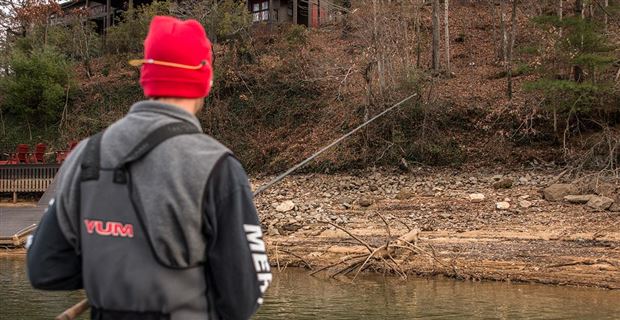
Photo by scout.com
When the weather breaks and you begin targeting prespawn bass, don’t assume that you need to start in the stereotypical areas. If you spend a bit of time doing some map study and finding their eventual spawning destinations, there’s a great chance you might intercept the prespawn mother lode before anyone else finds ‘em.
天気が急変した時、またプリスポーンバスを相手にするとき、あなたはセオリー通りのエリアから始めなければいけないと決めつけないでください。 マップを研究をして、最終的なスポーニングエリアを見つけるのに少し時間を費やせば、他の誰かに見つけられる前にプリスポーンのメスに遭遇する可能性があるのです。

Photo by scout.com
いかがでしたか。
まずプリスポーンがいつの時期かという問題はあるかと思います。
しかしプリスポーンの時期というのを定義づけをするためには、日付けだったり、水温だったり、日照時間だったりと、定義づけるために組み込むべき要素が多く、曖昧だったり、またデータを取るのが大変だったりするでしょうから、とても難しいものだと思います。同じ地域であってもフィールドによって違うこともあるのでしょう。
また、よく言われていることに、デカいメスから産卵するということがあります。
そんなわけで、プリスポーンという時期や状態がハッキリ分からないからといって、冬のバスの付き場から探し始めるより、あと少しすればバスが来るであろう産卵場所から逆算したほうが、第1陣のでかいメスに巡り合う可能性が高いということなんですね。
私が良く話題に出してしまう琵琶湖のガイドのタク石黒プロなんですが(タクちゃんに限らずなんだと思いますが)、春のような不安定な季節には必ず、今釣れているパターンと、ちょっと前に釣れていたパターンと、ちょっと先に釣れるはずの場所やパターンを試しているようです。もしかしたらお客さんのガイド中はそういうことはやらないかもしれませんが、ガイドプラでは必ずやっていると思います。
ほぼ1年中、そこで釣りをしているガイドさんでも、冬から春は天候などちょっとした違いでバスの居場所が変わってしまうことにとても神経を使っているということですよね。
私は釣りも、バスの動きを予測することも上手ではありませんが、湖によってはスポーニングされるエリアがどこかは知っています。この確定した部分からバス探しをするというのは確かに、私に向いているかもしれません。
今度の早春は、私も「いないならいないでいいや」と割り切って、シャローから始めてみようかなと思いました。
皆さんは、やらないでください。ぜひ私に譲ってください(笑)
さて、もし、野尻湖や木崎湖に春からお越しの方は、当店のオリジナルマップのご活用をおすすめいたします!
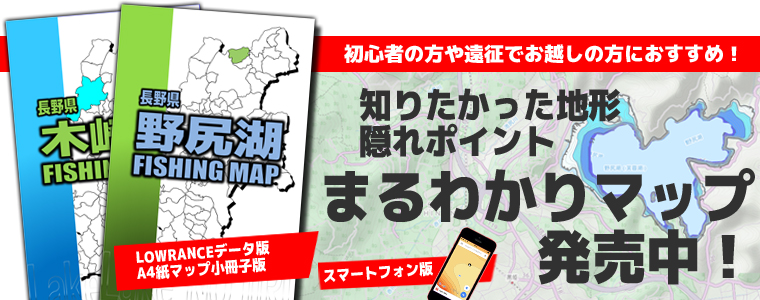
野尻湖や木崎湖では記事にあったようなチャンネルラインはあまり関係ないかもしれませんが、スポーニングエリアが分かっていますので、プリのバスが潜んでいるところも発見しやすいかもしれません。
A4の紙バージョン、スマホバージョン、ロランス魚探用AT5データバージョンがございます。
ぜひマップを活用して、プリスポーンのバスが潜んでいそうなところをあぶり出し、自分だけのバスを目指してみてはいかがでしょうか。
ちなみに2018年の野尻湖は4月28日(土)解禁で、木崎湖は2月中旬から3月中旬(雪の状況やボート屋さんによって変動)からスタートとなります!
野尻湖のレンタルボート、ピノキオさんのツイッターをフォローして釣果情報をチェック!
Tweets by pinokionojiriko
Follow @pinokionojiriko
木崎湖モダンボートさんのツイッターをフォローしてオープン情報などをチェック!
Tweets by modernboat
Follow @modernboat
今年も多くのデカスモールが釣れることでしょうね…ええ…私以外の方々によって…ですね…(笑)
それでは、また。
毎度ありがとうございます!





